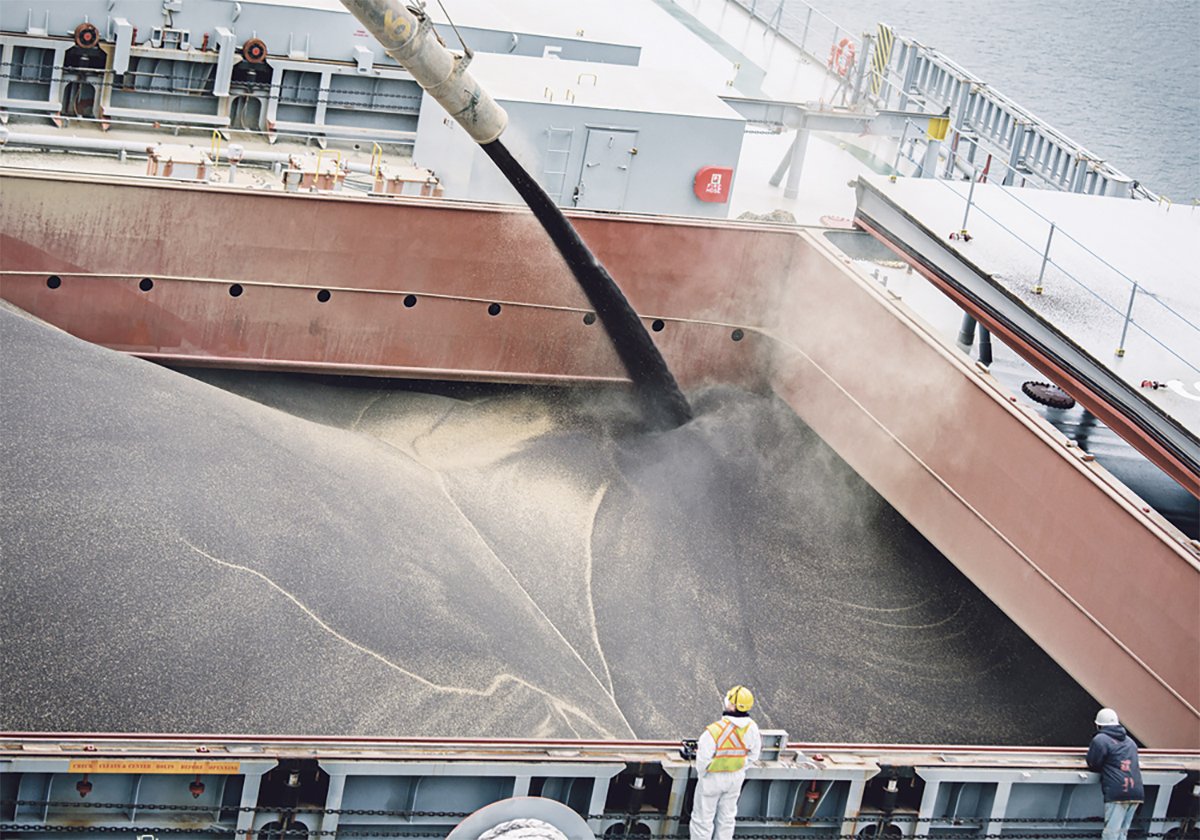Problems for pig farmers in South Korea and Germany mean hog prices are likely to keep rising, experts say.
“There is some pretty strong potential for a further upswing in prices,” said Tyler Fulton, a risk management specialist with the Hams marketing agency.
“Demand, largely from export markets, looks good, while (the potential for) supply (expansion) looks extremely limited. That’s exactly the situation that producers like to find themselves in.”
Chicago lean hog futures exceeded $90 US per hundredweight recently as a meat market and cross-commodity rally continues.
Read Also

Exports off to a slow start after last year’s torrid pace
Canadian grain, oilseed and pulse exports are off to a slow start, but there are some bright spots, according to the Canadian Grain Commission’s most recent weekly export data report.
The six-month outlook for North American pork prices, already strong because of reduced hog and cattle herds, has been increased by a foot-and-mouth disease outbreak in South Korea and a problem with contaminated feed in Germany.
The foot-and-mouth outbreak has forced South Korea to cut its hog herd by about 25 percent. The country is Canada’s fourth largest export pork market worth almost $126 million in 2009.
The culling is good news from a supply and demand standpoint, but the main gain for the North American market is expected to come from South Korea’s decision to cut its hefty 30 percent tariff on imported pork until June 15.
“The likelihood of better sales are definitely increased,” said Canada Pork International executive director Jacques Pomerleau.
“They are likely to buy a lot more.”
The Korean government has said it will reassess its pork import tariffs in June, which has North American pork exporters optimistic about that market opening wider in the long term.
Ron Plain of the University of Missouri was cautious.
“You always hope … that once the tariff is down that you can keep it down,” he said in an interview.
“Oftentimes politically it is a more difficult decision to lower a tariff than raise one.”
Fulton said the South Korean situation is not as important as many think because relaxation of the tariff applies to only 60,000 tonnes of pork. The North American supply and demand balance wouldn’t radically change even if exports to South Korea doubled, he added.
“I don’t know if it’s got more mileage than a couple of bucks in the futures,” Fulton said.
“I think it gets more play than it should.”
Plain said the discovery of dioxin in pig and poultry rations in Germany might open more room in Asia and Russia for North American pork.
“That’s likely to be good for U.S. and North American hog producers in that it raises questions about the quality and safety of European meat,” said Plain.
The European Union does not export fresh chilled pork to Asia, which Canada and the United States are able to do. However, some EU frozen pork is sold to Asia, and that market might provide new opportunities, he added.
Russia is a big consumer of European pork in many years.
Fulton said the rise in hog prices might be tempered by the already large run-up.
The futures markets appear to be pricing in a U.S. herd reduction because of high corn prices, but that won’t happen quickly.
“When you see a move in corn prices, you can’t expect a supply change realistically in (hog production) in response to that for at least a year, if not closer to 15 months,” he said.
“The premium is already pretty good. It’s already factoring in a lot of things that might actually take some time to pan out.”
However, it’s unlikely that the supply of other meat will increase, he said, which should keep pork prices strong.
The cattle herd shows no signs of expansion, while chicken producers have not expanded their flocks in recent months because of rising corn prices. That makes pork reasonably priced in comparison, Fulton said.















